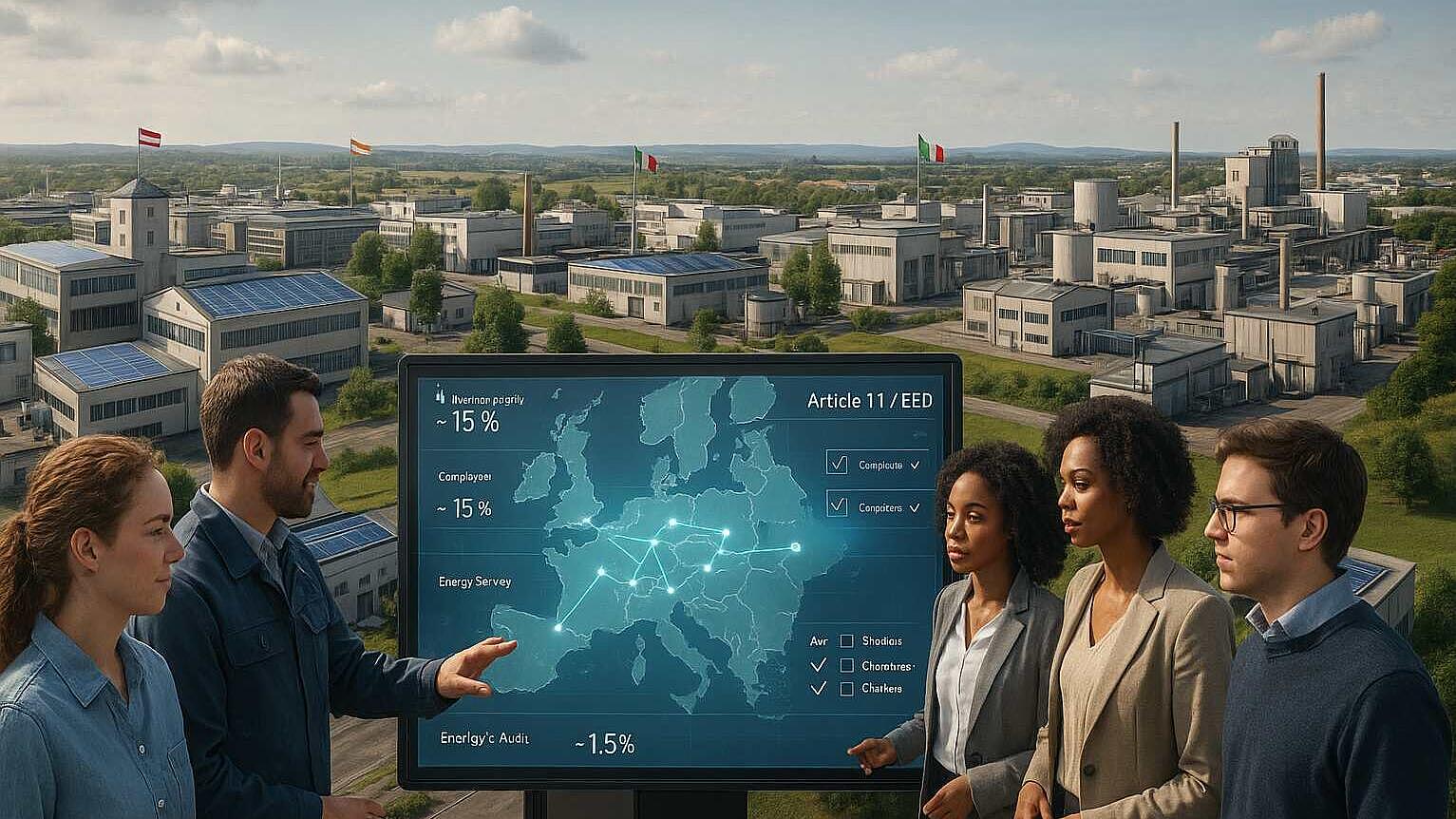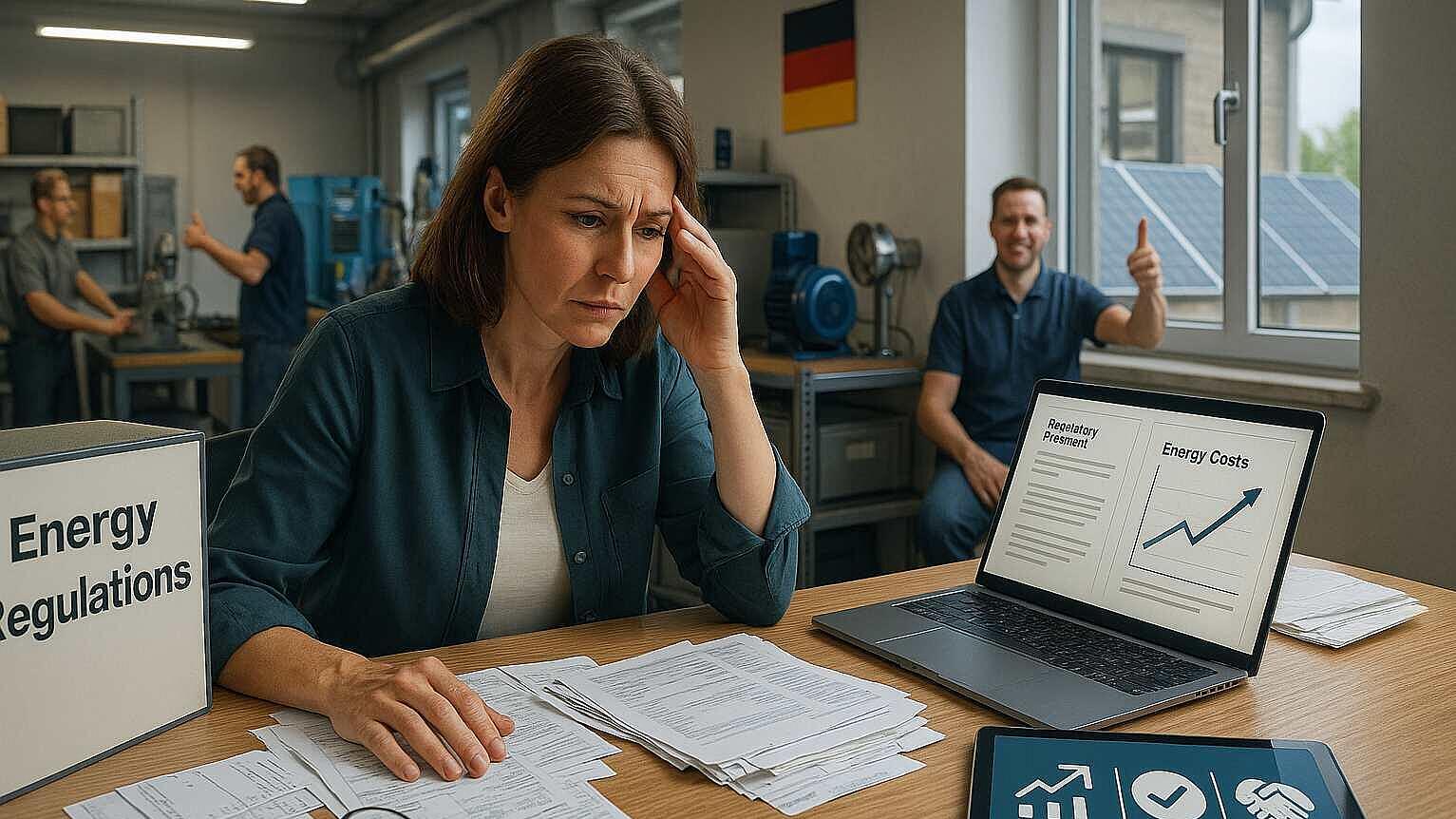 Energy Efficiency
Energy EfficiencyOvercoming Barriers: How Article 11 of the Energy Efficiency Directive Is Driving Real Change Across Europe
Summary
The paper discusses the significance and challenges of implementing Article 11 of the Energy Efficiency Directive (EED) in European companies. It emphasizes that energy audits mandated by the directive are essential for identifying savings and competitive advantages, but the process of translating policy into practice faces hurdles such as identifying obligated companies, ensuring compliance, maintaining audit quality, balancing reporting demands, and motivating companies to view audits as beneficial.
The DEESME project identifies five strategies to address these challenges: centralizing information, showcasing the non-energy benefits (NEBs) of efficiency, providing clear guidelines that bridge policy with practice, encouraging benchmarking and peer learning, and streamlining administrative burdens while supporting SMEs. Successful examples from across Europe illustrate the effectiveness of these strategies.
The paper underscores that the future of energy policy includes more stringent audits, action plans, quality checks, and public reporting, with an emphasis on NEBs. Training the next generation of professionals to integrate energy, sustainability, and strategy is key to shaping Europe’s low-carbon future. Finally, the paper highlights Enerwhizz, a mobile quiz for future energy leaders, encouraging engagement through interactive learning.
Open full article
Overcoming Barriers: How Article 11 of the Energy Efficiency Directive Is Driving Real Change Across Europe
Imagine a network of factories, offices, and workshops across Europe—each one balancing rising energy costs, new EU regulations, and the daily pressure to stay competitive. For many companies, especially small and medium-sized enterprises (SMEs), energy efficiency once felt like just another bureaucratic hurdle. But as the climate crisis grows and the Energy Efficiency Directive (EED) evolves, national authorities, industry leaders, and ambitious young professionals are teaming up to make energy management a true driver of change.
At the heart of this effort is Article 11 of the EED (previously Article 8), which sets the rules for energy audits and management systems in European companies. The DEESME project has worked hand-in-hand with policymakers, businesses, and associations across the continent, distilling a decade of lessons into practical recommendations that are already making a difference from Austria to Spain.
Why Article 11 Matters: The Current Landscape
Article 11 of the recast EED requires EU Member States to ensure that companies—especially large ones and energy-intensive SMEs—regularly assess their energy use, identify opportunities for savings, and implement improvements. The idea is simple: every audit can unlock new efficiency, cost reductions, and even competitive advantages.
Yet, turning policy into practice isn’t easy. DEESME’s research, consultations, and workshops reveal a series of recurring challenges:
- Identifying which companies are obligated (often complicated by fragmented or outdated databases)
- Ensuring compliance and timely audits, especially in complex ownership structures or rapidly changing markets
- Maintaining high audit quality—with some reports lacking depth, focus, or actionable recommendations
- Balancing reporting demands with monitoring effectiveness
- Motivating companies, especially SMEs, to see audits as opportunities—not just paperwork
DEESME’s key insight: overcoming these challenges requires not just regulation, but collaboration, communication, and a clear focus on “multiple benefits”—the wider advantages of energy efficiency beyond mere savings.
Innovations and Solutions: Five Steps to Success
Drawing from pilot projects and expert workshops in Austria, Bulgaria, Croatia, Finland, Greece, Ireland, Italy, Poland, Slovenia, and Spain, DEESME has identified five core strategies for making Article 11 work for everyone:
1. Centralize and Simplify Information
SMEs and even large firms can get lost in a maze of legal texts and scattered resources. The solution? Central information hubs at the national or regional level that:
- Combine all guidance, funding information, and requirements in one accessible location
- Use clear visuals, plain language, and interactive tools
- Partner with industry associations to spread the word and build trust
Austria’s digital business platform and Ireland’s FAQ-based web resources are already showing how a single point of contact can boost compliance and understanding.
2. Showcase Multiple Benefits
Energy efficiency is about more than lower bills. Non-energy benefits (NEBs) such as improved safety, reduced emissions, less downtime, and stronger brand value often matter even more to decision-makers.
- National schemes should require audits to assess these wider benefits, and grants or incentives should reward projects that deliver them.
- Case studies, short videos, and social media campaigns help make the business case tangible and inspiring.
Croatia and Bulgaria, for instance, are linking carbon footprint calculations and NEBs to audit processes, using success stories to motivate further action.
3. Guidelines That Bridge Policy and Practice
With overlapping EU and national sustainability rules, companies often feel overwhelmed. Structured guidelines and handbooks—with flowcharts and real-world examples—make it easier for businesses to understand:
- What is legally required
- How audits link to broader sustainability goals (like the EU Taxonomy or Corporate Sustainability Reporting Directive)
- The practical steps to compliance, reporting, and improvement
Italy’s sector-specific guidance and Greece’s auditor portals are standout examples of this approach.
4. Benchmarking and Peer Learning
Benchmarks—comparing a company’s energy performance with sector averages—make improvement measurable and meaningful.
- National authorities should publish regular benchmarks for energy use and NEBs by sector.
- Success stories and “peer networks” help companies learn from each other and accelerate uptake of recommended measures.
Finland’s Energy Audit Programme and Spain’s sectoral benchmarks have helped turn energy efficiency into a source of pride, not just a mandate.
5. Streamline Administrative Burdens and Support SMEs
For SMEs, paperwork and red tape are major barriers. National schemes must:
- Simplify application and reporting processes—for example, with online forms and pre-filled templates
- Provide tailored support and clear overviews of funding or training opportunities
- Use regional events and local contacts to make engagement personal and practical
In Poland and Slovenia, automating monitoring and offering support through chambers of commerce and industry networks is driving real results.
Impact on the Future: The Next Generation of Policy and Practice
The new EED brings fresh requirements: more rigorous audits, clear action plans, quality checks, and public reporting of results. National authorities are now encouraged (or required) to:
- Foster networks and training for SMEs
- Make NEBs a standard part of audits
- Encourage carbon tracking and transparent reporting
- Develop incentive schemes that prioritize both savings and wider impacts
This is where young professionals come in. Tomorrow’s leaders—whether in engineering, policy, or business—will need to be fluent in both technical analysis and “storytelling” the broader value of energy management. Those who can link energy, sustainability, and strategy will shape Europe’s low-carbon future.
Call to Action: Your Path Starts Here
Are you ready to be part of this transformation? Start by engaging with real-world cases and testing your knowledge in a fun, interactive way.
Try Enerwhizz, the multi-lingual mobile quiz for future energy leaders. Play competitive 45-second rounds, join leagues, complete missions, and win gems, prizes, and ET coins!
Conclusion
Europe’s energy transition is as much about people and organizations as it is about technology. Article 11 of the Energy Efficiency Directive, and projects like DEESME, are showing that with the right mix of policy, practice, and partnership, every audit can become a stepping stone to a more sustainable, resilient, and prosperous future—for companies and for society.
Sources & more…
More on Article 11 of the Energy Efficiency Directive: https://ieecp.org/wp-content/uploads/2024/10/D5.1-DEESME-Policy-Recommendations.pdf
More on D2050, the underlying EU project, check via “all EEIP projects”: https://projects.ee-ip.org/#ongoing-projects
More information on the EnerWhizz mobile quiz game, check: https://www.enerwhizz.info/



